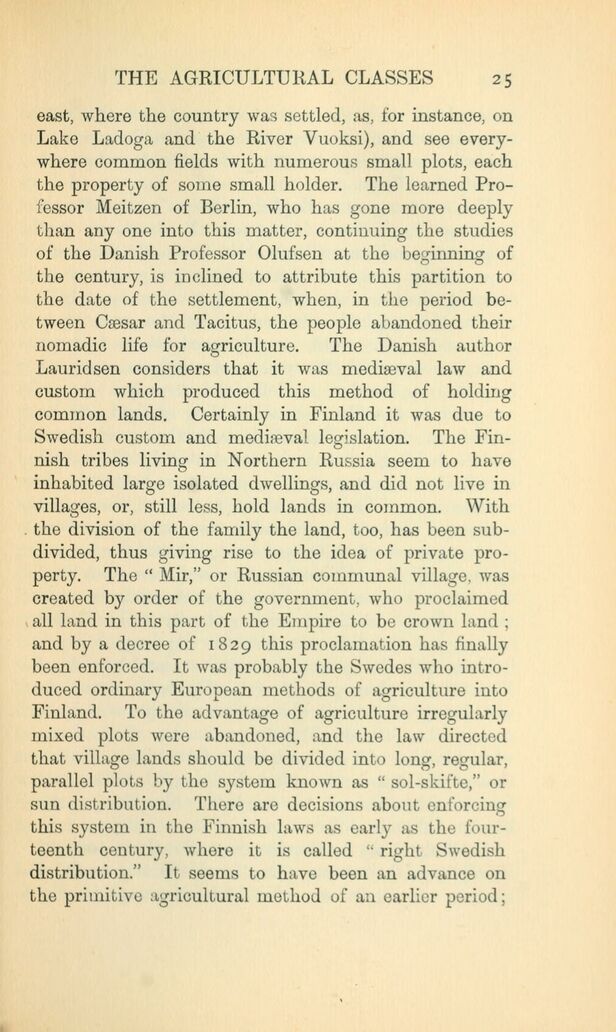
Full resolution (JPEG) - On this page / på denna sida - II. The Agricultural Classes

<< prev. page << föreg. sida << >> nästa sida >> next page >>
Below is the raw OCR text
from the above scanned image.
Do you see an error? Proofread the page now!
Här nedan syns maskintolkade texten från faksimilbilden ovan.
Ser du något fel? Korrekturläs sidan nu!
This page has been proofread at least once.
(diff)
(history)
Denna sida har korrekturlästs minst en gång.
(skillnad)
(historik)
east, where the country was settled, as, for instance, on
Lake Ladoga and the River Vuoksi), and see
everywhere common fields with numerous small plots, each
the property of some small holder. The learned
Professor Meitzen of Berlin, who has gone more deeply
than any one into this matter, continuing the studies
of the Danish Professor Olufsen at the beginning of
the century, is inclined to attribute this partition to
the date of the settlement, when, in the period
between Cæsar and Tacitus, the people abandoned their
nomadic life for agriculture. The Danish author
Lauridsen considers that it was mediæval law and
custom which produced this method of holding
common lands. Certainly in Finland it was due to
Swedish custom and mediæval legislation. The
Finnish tribes living in Northern Russia seem to have
inhabited large isolated dwellings, and did not live in
villages, or, still less, hold lands in common. With
the division of the family the land, too, has been
subdivided, thus giving rise to the idea of private
property. The “Mir,” or Russian communal village, was
created by order of the government, who proclaimed
all land in this part of the Empire to be crown land;
and by a decree of 1829 this proclamation has finally
been enforced. It was probably the Swedes who
introduced ordinary European methods of agriculture into
Finland. To the advantage of agriculture irregularly
mixed plots were abandoned, and the law directed
that village lands should be divided into long, regular,
parallel plots by the system known as “sol-skifte,” or
sun distribution. There are decisions about enforcing
this system in the Finnish laws as early as the
fourteenth century, where it is called “right Swedish
distribution.” It seems to have been an advance on
the primitive agricultural method of an earlier period;
<< prev. page << föreg. sida << >> nästa sida >> next page >>